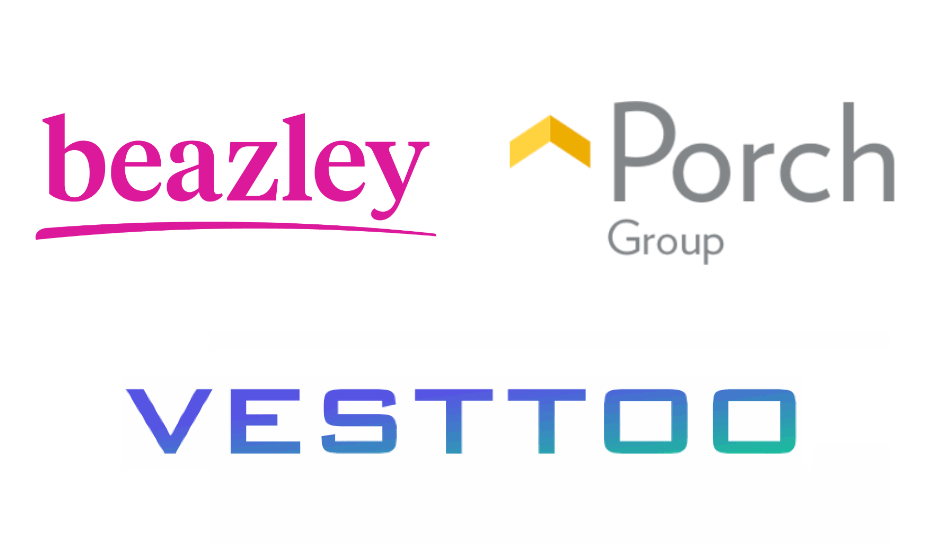Vesttoo creditors, Beazley, Porch settle on bankruptcy plan & Vesttoo Bay XIX funds

Another settlement agreement has been reached between the Official Committee of Unsecured Creditors in the Vesttoo bankruptcy case and two of the affected cedents, in this case Beazley and Porch, with these cedents agreeing to support the bankruptcy plan and gaining rights to a portion of the funds held in debtor vehicle Vesttoo Bay XIX Limited.
This is now the third settlement agreement to have been reached as a result of the recent mediation process that has been undergone, which has clearly delivered some benefits in terms of getting parties on-side with the proposed bankruptcy plan and proposal for a liquidation process for Vesttoo’s estate.
As we reported earlier this week, the mediation attempts appear to have been successful, with a number of settlements now said to have been reached.
The first proposed settlement to come to light was between the Official Committee of Unsecured Creditors in the Vesttoo bankruptcy case and fronting specialist Clear Blue Insurance, which saw an agreement reached on the proposed bankruptcy plan and in relation to funds held in one of the debtor vehicles, Vesttoo Bay XIV Limited.
The second settlement agreement involved specialty insurance and reinsurance firm Chaucer, which settled with the Creditor Committee, over the Vesttoo Bay XXIV vehicle that had been used for collateralized casualty reinsurance quota shares it had entered into that had been backed by what is now known to be fraudulent reinsurance collateral supplied by Vesttoo.
Now, this third proposed settlement sees two of the other ceding company parties that had reinsurance deals affected by fraudulent LOC collateral supplied by Vesttoo, London headquartered specialty insurance and reinsurance firm Beazley which was known to be a company exposed to a Vesttoo-linked trade and Porch Group, owner of a homeowners insurer that found a letter of credit (LOC) backing its reinsurance deal with insurtech Vesttoo was forged.
On Beazley, the firm’s CEO had previously explained that were it to find itself in a situation where a reinsurance counterparties collateral was impaired, it would cancel and replace that cover, but then move to recover the premium it had paid such a counterparty.
On Porch, recall that its subsidiary Homeowners of America Insurance Company (HOA) was revealed as one of the first companies exposed to Vesttoo’s fraudulent reinsurance LOC’s, but that recently this company agreed a $30 million strategic arrangement with Aon, that included releasing all claims related to the Vesttoo fraud that it had against the broker.
Onto this latest settlement agreement, which is smaller than the others, it appears.
This one relates to Vesttoo Bay XIX, Limited Partnership, another of the vehicles utilised by debtor Vestoo, which in this case appears to have been utilised for reinsurance deals involving more than one cedent, Beazley and also Porch.
Vesttoo Bay XIX is said to hold $3,849,795.24 in cash, but again the debtors appear to have used a portion of this to pay professionals involved in the bankruptcy case.
This seems another example of the issue we highlighted recently, that some funds remaining from reinsurance transactions implicated in the letter of credit (LOC) fraud had been drawn from debtor structures and co-mingled at Vesttoo Ltd’s general account, then used to pay company expenses.
Leading to uncertainty over what might be remaining for the creditors to the bankruptcy estate.
The cedents, Beazley and Porch, claim sole rights to the cash in this debtor vehicle, but after the mediation with the Official Committee of Unsecured Creditors a settlement agreement has been reached on a way forwards.
First point in this settlement, is that the two cedents agree to support and will not object to the bankruptcy plan that has been proposed to the Delaware court.
The funds in question still need to be transferred back from Vesttoo Ltd. to Vesttoo Bay XIX it seems, as in one of the other settlements and be raised back to the original balance mentioned above, of almost $3.85 million.
After that, the estate can only utilise up to 50% of this cash once the bankruptcy plan is effective and these two cedents, Beazley and Porch, would then be entitled to have a claim over the remaining 50%.
Which is not a particularly large amount of value to be returned, but at least secures for the cedents a share of what look likely to be some of the premium payments they might have made for Vesttoo-linked reinsurance cover that turned out to be backed by forged LOC’s.
Again, the creditor committee and the cedent parties explain that without this agreement, there would likely be ongoing litigation with attendant risk and cost associated to it, so they feel this settlement is a fair and reasonable way to resolve the dispute over the funds related to Vesttoo Bay XIX.
Ongoing litigation and claims over the constructive trust of the assets of the bankruptcy estate would likely deplete it further, perhaps resulting in little to no value left for creditors, so the committee recommend these settlements as a way to preserve value for all.
Interestingly, unlike one of the other settlements involving Chaucer, this one does not mention any segregated cell related rights, suggesting those could have no bearing to this claim, or may have been settled in another manner.
These additional settlement agreements are progress, in putting this issue to bed, although they do need the approval of the court.
Read all of our coverage of the alleged fraudulent or forged letter-of-credit (LOC) collateral linked to Vesttoo deals.






